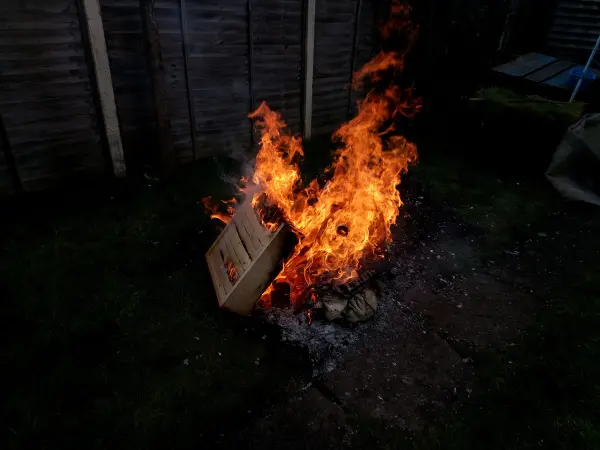
I wrote a post back in 2021 showing how to make a Dakota fire hole. I’ve been a fan of fire holes ever since. I’ve also had a few burn barrels (burning bins) over the years. In this post, I’ll explain why I think fire holes are superior to burn barrels. I’ll start off with…
Burn Barrels
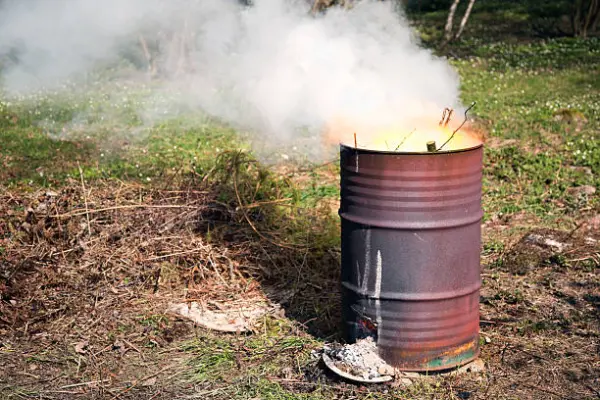
Advantages
Easy to find
Searching for burn barrel on Facebook Marketplace will return lots of results:

Easy to get a fire going
Once you’ve got good airflow holes in your barrel, you can easily get your fire started. As stuff burns down, you can just throw more stuff into the barrel.
Low maintainance
Burn barrels need no maintainance. You just use it when you need to. The greatest effort may be moving the barrel from where you store it when it’s not being used.
Disadvantages
You’ll (probably) have to pay for one
A minor point possibly, but unless you know someone who can get you one for free, you’ll be charged between ten and twenty pounds for a burn barrel.
You’ll (probably) need a van to collect
You’ll struggle to get a 55 gallon drum in a car (unless it’s an estate), so a van will almost certainly be needed. It’s not a dealbreaker, but I think this is a disadvantage.
Harder to get air intake right
Any fire needs air to burn and to continue to burn. The first burn barrel I had was plasma cut by a welder I worked with and that one burnt as well as a fire hole. It had about 30 holes cut around the circumference (similar to below, but many more holes):
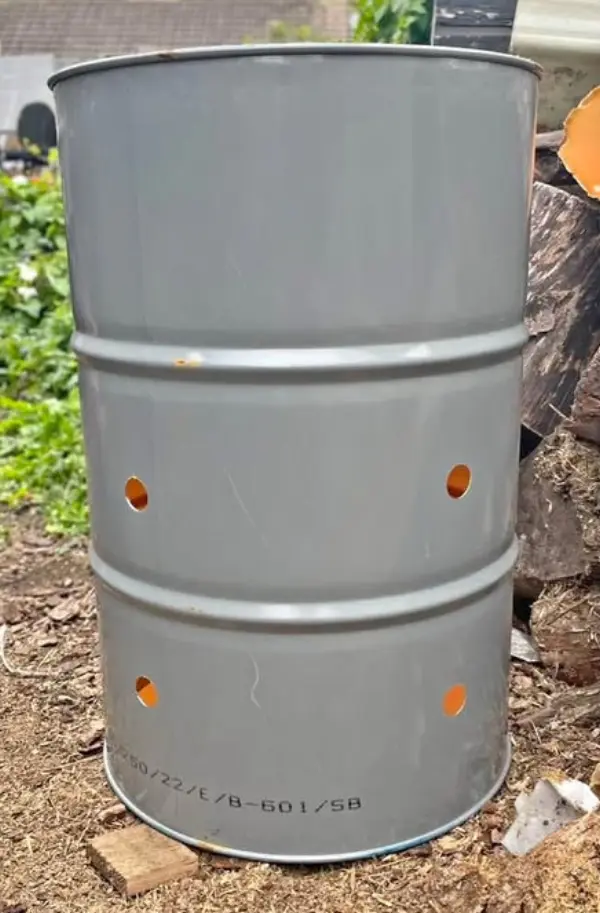
I tried to drill some holes on my second burn barrel, but to be honest, it was crap compared to the first one.
Corrodes quickly
If you’re lucky, you’ll get up to two years use out of a barrel. Quite possibly less. Then, you’ll be looking at this:
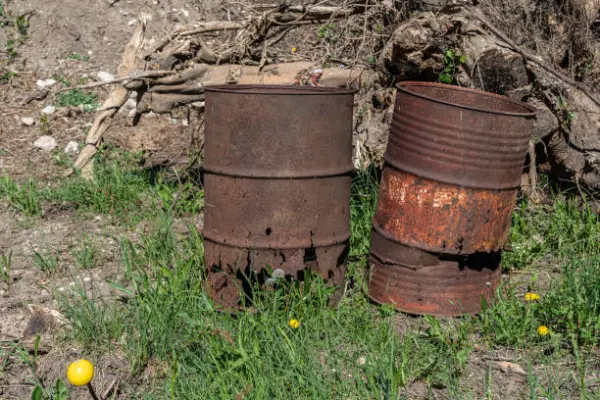
Fire Holes
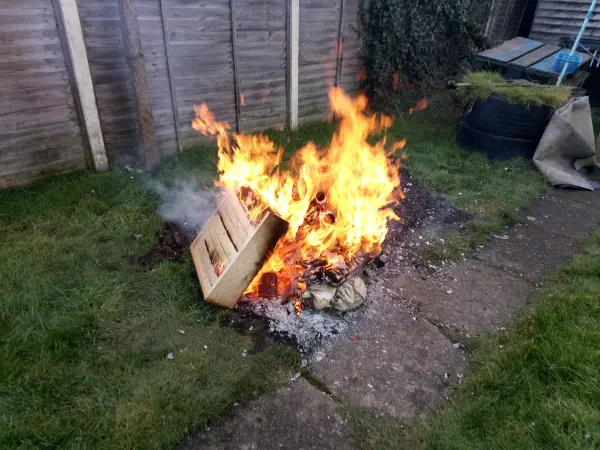
Advantages
Completely free!
As long as you’ve got a couple of tools (see below), the only cost to a fire hole is the time taken to dig the thing. Once you’ve dug the whole in the first place, the soil will remain soft, making reusing the holes much easier the next time.
Resizeable
A massive advantage to my mind. As I wrote in my previous fire hole post, the first one I made was very small. The next day, I reused the air hole from the first hole as the fire hole that time, but made it much bigger.
Very efficient spacewise
I always think that my fire hole is too small to burn what I need to burn. However, it never is. The one I did yesterday obliterated a desk (with three drawers) which I cut up with my reciprocating saw, various other pieces of wood I’d accumulated, loads of old papework, a few large and small cardboard boxes. All in this tiny footprint:
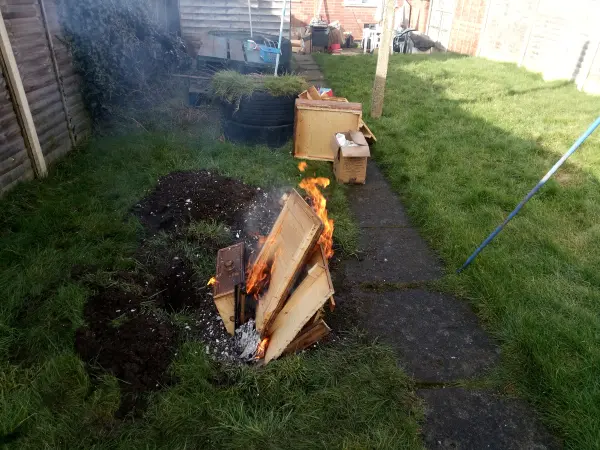
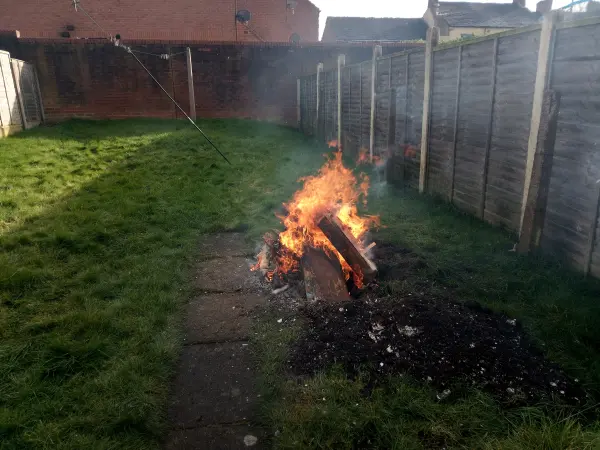
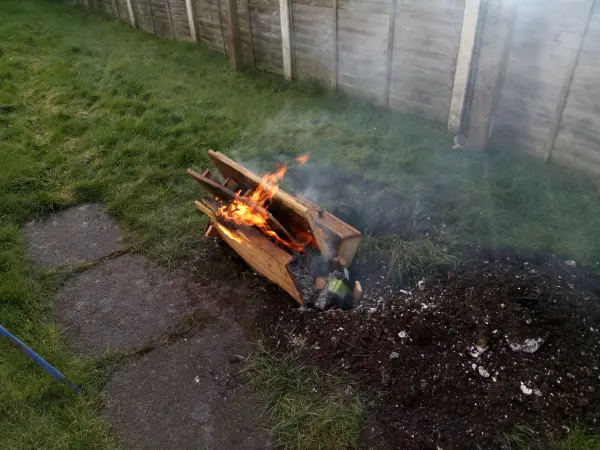
Less smoke
This all depends on what you’re burning, of course, but generally fire holes (also known as stealth fire holes) produce less smoke than any other type of fire.
Disadvantages
More upfront work
Depending on your soil, you might find digging the initial holes quite hard work. I certainly did! If I remember correctly, it probably took about twenty minutes the first time. The one I did yesterday less than ten minutes to get ready.
You’ll need some equipment
Before you even think of digging your first fire hole, you’ll need a mattock and a shovel. Mine are shown below, the shovel is a swan necked, long handled one (makes things easier on your back):
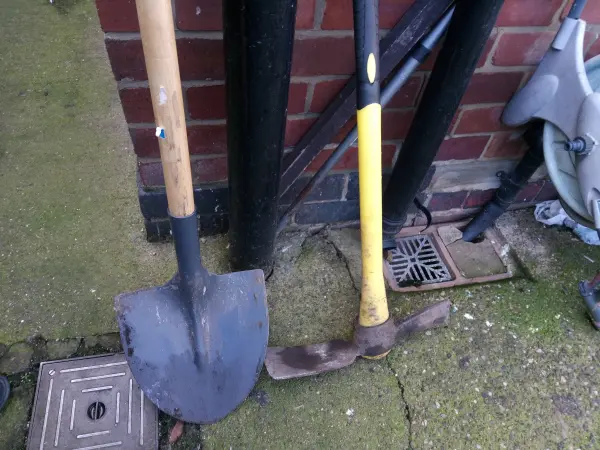
If you’re strapped for cash, you could just buy (or beg for) a shovel, but it’ll probably take you a bit longer to get the holes dug.
Conclusion
As you’ve seen, fire holes and burn barrels both have pros and cons. After having used both, I far prefer the versatility of a fire hole.
See my first post how to make a Dakota fire hole if you missed it.